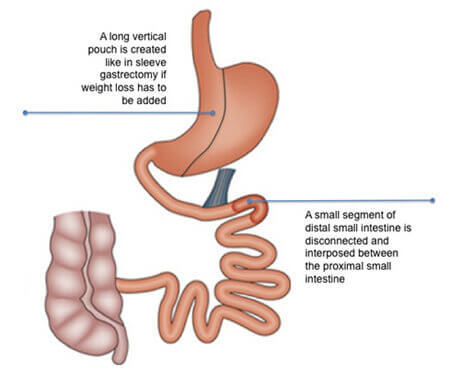Metabolic surgery
Metabolic syndrome
Metabolic syndrome is the name for a group of risk factors that increases the chance of developing heart disease, diabetes and stroke.
You must have at least three metabolic risk factors to be diagnosed with metabolic syndrome.
- A large waistline indicating abdominal obesity or “having an apple shape.” Excess fat in the stomach area is a greater risk factor for heart disease than excess fat in other parts of the body, such as on the hips.
- A high triglyceride level (or you’re on medicine to treat high triglycerides). Triglycerides are a type of fat found in the blood.
- A low HDL cholesterol level (or you’re on medicine to treat low HDL cholesterol). HDL sometimes is called “good” cholesterol. This is because it helps remove cholesterol from your arteries. A low HDL cholesterol level raises your risk for heart disease.
- High blood pressure (or you’re on medicine to treat high blood pressure). Blood pressure is the force of blood pushing against the walls of your arteries as your heart pumps blood. If this pressure rises and stays high over time, it can damage your heart and lead to plaque buildup.
- High fasting blood sugar (or you’re on medicine to treat high blood sugar). Mildly high blood sugar may be an early sign of diabetes.
The treatment of Metabolic Syndrome by surgical methods is called Metabolic Surgery.
Metabolic surgery
Experiments were done in the last half of the 20th century to see if diseases like high lipids and cholesterol could be treated with surgical procedures such as intestinal bypass.
In 1995, Dr. Walter Pories and his research team published an article titled “Who would have thought it? An operation proves to be the most effective therapy for adult-onset diabetes mellitus”. Since that landmark paper, much evidence has been accumulated showing that surgery can cure/improve several metabolic diseases, especially adult onset or Type 2 diabetes mellitus.

In 2009 the American Society for Bariatric Surgery (ASBS) changed its name to the American Society for Metabolic and Bariatric Surgery (ASMBS) to promote information on the beneficial effects of surgeries for weight loss in treating metabolic diseases, especially Type 2 Diabetes Mellitus (T2DM).
Today, the term Metabolic Surgery is used to describe weight loss treatments and procedures to treat metabolic diseases, especially, type 2 diabetes.
Gastric Bypass and Bilio-pancreatic diversion have resulted in control/ cure of diabetes. This surgery can only be performed in obese patients with BMI > 35.
However, the need for control of diabetes in non-obese patients led to the development of Ileal Interposition surgery or Duodenojejunal bypass surgery for diabetics who do not require gastric bypass. This can be performed in thin type 2 diabetics with BMI as low as 30 or with sleeve Gastrectomy in overweight/obese diabetics.
Ileal interposition is a procedure where a segment of last part of small intestine (ileum) is interposed between 2 parts of small intestine (jejunum) just beyond stomach. No part of small intestine is removed or bypassed. Duodenojejunal bypass is similar to gastric bypass except that the small bowel anastamosis is done to the duodenum instead of the stomach. These two procedures give patients good stomach volume to eat.
Only few centers around the world are performing these procedures. Over 80% normal weight patients with T2DM have achieved diabetes resolution within 7 days – 3 months of surgery. Similarly, over 85% of obese diabetics have diabetes resolution after surgery. Diabetes resolution may vary subject to age, duration of diabetes, period of insulin intake.
UPDATED ON 28/03/2024
Apollo Highlights & Updates
 Apollo Hospitals Group becomes the largest hospital network to have the most JCI Accreditations...
Apollo Hospitals Group becomes the largest hospital network to have the most JCI Accreditations... Call Us Now
+91 8069991061
Book Health Check-up
Call Us Now
+91 8069991061
Book Health Check-up





